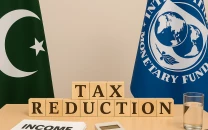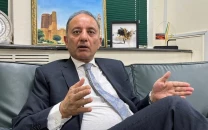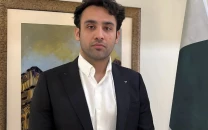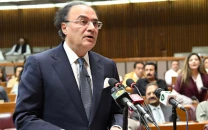Light at the end of the tunnel: We are not yet at the point of no return
Mere perceptions are putting a negative spin on the national economy.

While full-year remittances last fiscal year touched $13.2 billion, the State Bank is confident remittances will cross $14 billion this year. DESIGN: KIRAN SHAHID
According to a recent report issued by the Asian Development Bank (ADB), the Pakistani economy is not doing great, and it is expected to do worse.
The ADB has based the analysis on a number of factors and statistics. According to the ADB, inflation has continued and continues to rise over the past five years, investment inflows have continued to fall, and the previous government failed to show any clear direction in its economic policies and decisions. It has also been critical of the interim government in that it has also seemingly failed to take required initiatives in taking effective decisions.
The ADB also feels that with the worsening balance of payments position, any chances of a recovery are weak at best.
This is an extreme assessment, and while many of their contentions are true, also a little unfair. For example, their assessment that the previous government has failed to come up with a solid economic plan or show any direction in their policies is true. It is also true that such an approach can only lead to disaster.
Their assessment that the caretaker setup has failed to pick up the pieces and make the right decisions is right; but their expectations from the caretaker government are not entirely realistic. The caretaker setup has come in primarily with the mandate to conduct elections. Any direction that the economy needs or gets will be dependent on the policies of the incoming government.
The ADB, citing statistics, says that inflation has continued to rise over the past few years: this is not entirely accurate. Inflation did hit highs during the tenure of the outgoing government, but over the past two years it has been more or less under control. And even if one argues that the government’s numbers are flawed and they have changed the methodology of calculating inflation to come up with a more digestible number, core inflation, which is based on categories that the number cannot manipulate, has also fallen. It is still on the higher side, at a little over 9%, but is expected to stabilise this year if not actually fall. This was confirmed by the State Bank of Pakistan in recently released reports for the first and second quarter of fiscal 2013, which say that inflation should be under control for the medium term.
Yes, it is true that the foreign exchange position is under a bit of a threat; but not overly so, considering the fact that Pakistan’s external public debt actually fell by $1.9 billion during the first half of the current fiscal year.
The latest figures released by the government also point to an increase in imports, which may be a signal of an increase in activity on the local manufacturing front, another good sign for the economy. Textile exports should have a relatively good year because of the duty-free access granted to the EU, as well as the fact that China will maintain its voracious appetite for cotton yarn.
As far as worries about falling foreign reserves is concerned, there are two factors to keep in mind. The fall is for the most part temporary, due to loan repayments to the International Monetary Fund. Meanwhile, the steady rise in remittances has continued to shore up the domestic economy, posting inflows of $7.1 billion in the first half of fiscal 2013, compared to $6.9 billion the previous year.
While full-year remittances last fiscal year touched $13.2 billion, the State Bank is confident remittances will cross $14 billion this year. Given these estimates, I do believe that the ADB’s outlook is strongly influenced by perceived vulnerabilities in the external sector.
Construction activity has picked up in the country, and this could offset losses experienced by the agriculture sector after the floods. The increase in lending to the private sector is also expected to continue, especially considering the chances of a rate cut in the next monetary policy announcement.
The current situation, with a caretaker government in place, is to some degree responsible for the uncertainty on the economic outlook and the reluctance of investors in taking a long-term view. This does not mean, however, that the government does not need to set its priorities right and take measures to address issues like the energy crisis, the growing size of the informal economy and the narrow tax-base. What this means is, that if the right moves are made, there is light at the end of the tunnel.
According to government officials, the IMF also feels the same.
Published in The Express Tribune, April 15th, 2013.
Like Business on Facebook to stay informed and join in the conversation.


















COMMENTS
Comments are moderated and generally will be posted if they are on-topic and not abusive.
For more information, please see our Comments FAQ